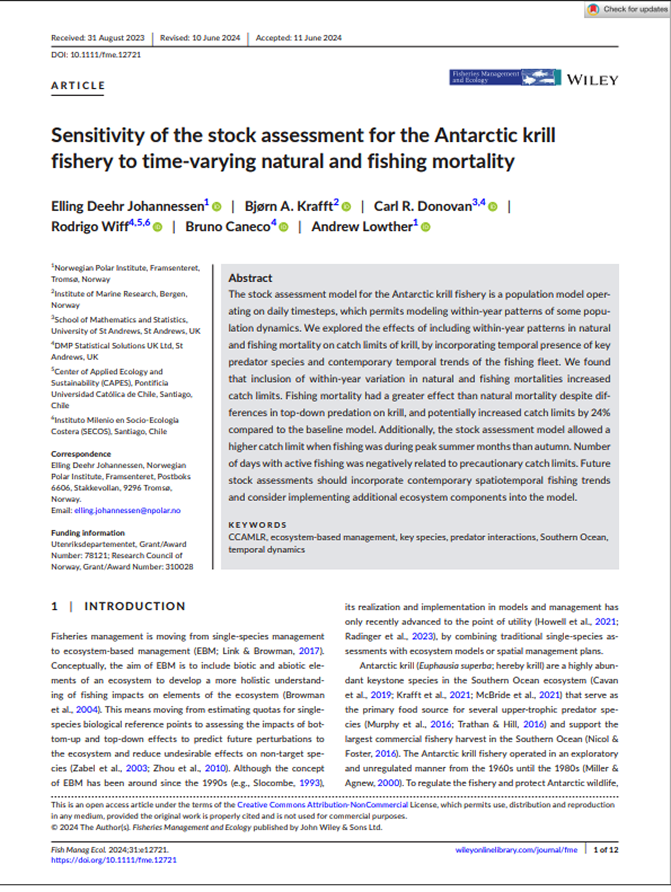Biomass
Antarctic ecosystem
Krill (Euphausia superba)
Morphometric characteristics of Antarctic krill (Euphausia superba) and finfish bycatch in the krill fishery in the waters of South Orkney Islands during the 2022/23 fishing season
Summary
This study examined accidental fish catches (bycatch) in Antarctic krill fishing operations around the South Orkney Islands during the 2022/23 fishing season. Scientific observers documented 676 fish specimens, identifying 17 species from 8 families, including three dominant icefish species and four other important species.Researchers measured fish body dimensions, particularly width, to determine optimal bar spacing for bycatch reduction devices. Since krill have a maximum body width of approximately 10 millimeters, they recommend 10-millimeter bar spacing in reduction grids. This would allow krill to pass through while enabling significant fish escape rates: 94% of one dominant icefish species (Champsocephalus gunnari), 76% of another (Chaenocephalus aceratus), 54% of the third (Pseudochaenichthys georgianus), and 100% of one important species (Gobionotothen gibberifrons).

1
Map showing fishing locations for continuous fishing - with conveyor hose systems (red triangles) and conventional trawling (black dots) conducted by the fishing vessel SHEN LAN in South Orkney Islands waters. Each position on the map represents the midpoint between the starting and ending coordinates of each fishing operation.Key Findings
1
A total of 676 accidental fish catches were collected, with 665 identified to the species level (17 species from 8 fish families). 2
Three dominant bycatch species were all icefish: Champsocephalus gunnari, Pseudochaenichthys georgianus, and C. aceratus. 3
Four other important bycatch species came from the lanternfish, rockcod, and jonasfish families. 4
A 10-millimeter bar spacing would allow 93.94% of C. gunnari, 53.99% of P. georgianus, 76.25% of C. aceratus, and 100% of G. gibberifrons to escape through the nets. 5
Fish body measurement data is essential for designing bycatch reduction devices and maintaining sustainable krill fishing operations. 6
Different fishing methods (conventional versus continuous trawling) resulted in varying compositions of accidental fish catches.

